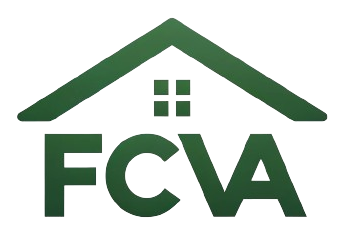How to Avoid Losing Tools or Cords When You Move
Have you ever experienced that sinking feeling when you realize something important is missing during a move? Whether it’s a tool you need to set up your new home or a cord for your favorite gadget, losing track of these essentials can turn what should be an exciting transition into a frustrating challenge. We all know moving can be hectic, but there are several strategies we can implement to avoid losing those pesky items. Let’s talk about how we can stay organized, reduce stress, and keep track of our tools and cords when it’s time to move.
The Importance of Planning Ahead
We often underestimate the chaos that a move can create. With boxes piled high and packing tape everywhere, it’s easy for items to go missing. By planning ahead, we can create a comprehensive inventory list that ensures nothing gets left behind. Starting a few weeks in advance gives us the time we need to be thorough, reduce the risk of losing our valuables, and provide some peace of mind.
Creating an Inventory List
One straightforward way to keep tabs on our belongings is to draft an inventory list. We can categorize the items we use regularly, which often include tools and cords. Here’s a simple framework to follow when we create that list:
| Category | Item Description | Location |
|---|---|---|
| Tools | Hammer | Garage |
| Cords | TV Power Cord | Living Room |
| Kitchen Tools | Chef’s Knife | Kitchen |
| Outdoor Gear | Lawn Mower | Shed |
Regularly updating this list as we pack ensures we know exactly where each item is located. Additionally, using labeled boxes makes it easier to track down specific tools and cords as we settle into our new space.
Labeling Boxes and Cables
Labeling might seem tedious, but trust us—it’ll be a lifesaver when we unpack. When it comes to cords, we can use color-coded stickers or tags. This strategy allows us to easily identify which cord belongs to which device. Here’s how we can do it:
Color-Coding System for Cords
- Red: Power cords
- Blue: USB cables
- Green: Audio and video cables
- Yellow: Network cables
Using this system means when we arrive in our new space, we can quickly find the cords we need without rummaging through a sea of packages.
Utilizing Plastic Bags for Small Items
Another approach we can take is using plastic bags for small items like screws, plugs, and batteries. As we disassemble tools or gadgets, we should place small parts in a labeled bag. This will not only protect those pieces from getting lost but also ensure they remain organized for reassembly. Our bags can look something like this:
| Bag Label | Contents |
|---|---|
| TV Stand | Screws and bolts |
| Workbench | Drill bits and attachments |
| Kitchen | Mixer components |
| Garden Tools | Hand tools accessories |
Designating a “Moving Day” Box
Let’s face it; moving day can be chaotic. To combat this, we can create a designated “Moving Day” box. This box should contain essential tools and cords we need for immediate tasks, such as assembly or setup in our new home. Packing this box ahead of time and keeping it easily accessible will save us the frustration of searching for items we need right away.
What to Include in Our Moving Day Box
| Item | Purpose |
|---|---|
| Screwdriver set | Assembly of furniture |
| Power strips | Powering multiple devices |
| Tape measure | Measuring spaces for furniture |
| Basic cleaning supplies | Quick clean-up after moving |
Keeping Tools Together
We might have various tools scattered around our homes, from the garage to the shed. To prevent losing these items while we move, we should group them together.
Tool Organizers and Containers
Investing in tool organizers or sturdy containers can pay off big time. Here are a few options to consider:
| Organizer Type | Description |
|---|---|
| Tool Belt | Keeps the most-used tools handy |
| Plastic Bins | Sturdy bins for heavier tools |
| Magnetic Tool Holder | Keeps tools visible and accessible |
By consolidating our tools, we’re making a structured plan to keep everything together and easily retrievable.
Cable Management Solutions
Cords can often get tangled or accidentally left behind during the moving process. To manage our cables effectively, we can use several helpful techniques.
Cord Management Techniques
- Bundling: Use twist ties or Velcro straps to bundle cords. This prevents knots and tangles during transport.
- Cable Clips: These handy clips keep cords attached to surfaces, reducing the likelihood of losing them.
- Zippered Pouches: Store groups of similar cables in zippered pouches to keep them neat and organized.
Taking time to neatly store and label our cords will alleviate stress and minimize headaches when we arrive at our new home.
Digital Inventory and Photos
In an increasingly digital age, we can make use of technology to keep track of our tools and cords. Taking photos of our items can serve as a visual inventory.
Using Technology to Our Advantage
- Photo Documentation: Snap pictures of our tools, cords, and their corresponding locations. This way, we know exactly what we have and where it is, even before we unpack.
- Inventory Apps: There are several apps designed for tracking our possessions. Using one can help us maintain and organize a digital inventory alongside our physical one.
By leveraging technology, we can streamline our packing process and simplify our moving experience.
Packing Techniques That Minimize Loss
The way we pack our items can drastically impact our ability to track them. Here are some recommended packing techniques that we can use.
Packing Cords with Their Devices
Instead of leaving cords behind when we pack electronics, we can tape the cords to the devices they belong to. This ensures they stay paired together during the move.
Clear Plastic Containers for Tools
For smaller tools, consider using clear plastic containers. Not only will they protect our tools, but we’ll also easily see what’s inside. Labeling these containers will help keep our items organized.
Tracking Systems
To ensure we have all our tools and cords accounted for on moving day, developing a tracking system can be beneficial.
Simple Checklists for Moving Day
Creating a checklist can help us document what has been loaded onto the moving truck. Before we drive away, we can make sure every item on our list is loaded:
| Item | Checked (✔) |
|---|---|
| Tool Box | |
| Cords and Cables | |
| Furniture |
Checking off items ensures that nothing valuable gets left behind or lost in the chaos.
Seeking Help
Sometimes, we just cannot manage the moving chaos alone. Engaging friends or family members for help or seeking professional movers can help ensure everything goes smoothly.
Benefits of Having Extra Hands
- More Eyes: We can double-check that nothing is left behind.
- Dividing and Conquering: Different people can manage different rooms, ensuring every item is packed correctly.
- Less Stress: With teamwork, we can feel relaxed rather than overwhelmed.
Establishing a Post-Move Routine
Once we’ve successfully transitioned to our new home, it is crucial to establish a routine for unpacking and organizing our tools and cords effectively.
Unpacking Strategy
- Use Our Inventory: Refer to our inventory list to unpack systemsically.
- Prioritize Essential Items: Unpack tools and cords that we rely on daily first.
- Organize As We Go: Create designated spots for each item upon unpacking, so we know exactly where everything is.
Reflecting on What We’ve Learned
Reflecting on our moving experience can help us feel empowered and ready for the future. Each time we move, we gain valuable lessons about how to stay organized and avoid losing important items.
Conclusion
Moving doesn’t have to be a chaotic experience filled with lost tools and cords. By implementing a few organizational strategies, from creating an inventory to utilizing technology, we can streamline the process and keep track of our essential items. Planning ahead, labeling appropriately, and engaging our support network can help us feel in control during what often feels like a whirlwind.
As we take on the task of moving, let’s embrace the opportunity to establish new routines and discover fresh methods of organization that will serve us well in the future. After all, every move is a chance to learn and grow, and we can make our next transition far more manageable—without losing our precious tools or cords along the way.
Ready to sell your house fast in Virginia? FastCashVA makes it simple, fast, and hassle-free.
Get your cash offer now or contact us today to learn how we can help you sell your house as-is for cash!
Disclosure: As an Amazon Associate, I earn from qualifying purchases.



